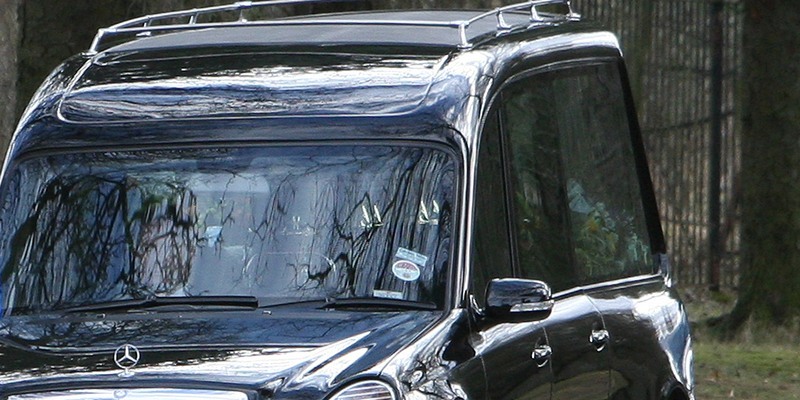An increasing number of inconsiderate drivers are failing to respect funeral corteges as they travel on Scotland’s roads.
That is according to the National Association of Funeral Directors Dundee and Angus, which says there are a few occasions where motorists fail to give way and sometimes even peep their horn at cars carrying families in mourning.
The association’s comments come on the same day a new study reveals road rage incidents against funeral corteges are now “commonplace” in Scotland.
Lindsay Martin, spokesman for the National Association of Funeral Directors Dundee and Angus, acknowledges there is a growing problem with impatient drivers.
“It is not a big problem but there is increasingly more times when drivers cut in to corteges, especially at roundabouts,” said Mr Martin, who also runs Selwood Funeral Directors.
“There seems to be a reluctance for people to give way to a hearse or to squeeze in behind it.
“This is a problem because it often means the hearse is on its own and has to slow down or stop further down the road so it can be part of the cortege.”
He added, “Everybody seems to be in a rush nowadays and this is more noticeable now. But I have to say that this is not a stereotypical case of young people being at fault.
“It is nice to see a lot of younger people who are wearing baseball caps actually remove them as the cortege passes by.”Sign of respectThe Co-operative Funeralcare, which operates 13 funeral homes in Dundee and Fife, revealed in its report that one in six Scottish drivers had seen funeral processions fall victim to rude hand gestures, verbal abuse or other threatening behaviour.
Other misdemeanours by drivers were cutting into the procession, playing music loudly and aggressive overtaking.
Research among more than 2000 men and women drivers of all ages found 85% of motorists would consider pulling over to let a funeral cortege pass as a sign of respect.
Nine out of 10 would drive at a slower speed to remain behind the funeral procession.
However, one in 12 drivers said they were unaware that they should not sound their horn at the cortege or avoid breaking into the procession.
One of the most shocking cases that Mr Martin has come across took place a few weeks ago at Claypotts junction in Dundee.
The incident involved an impatient elderly man who shouted at the drivers of the cortege as he tried to switch lanes.
Mr Martin said, “We actually had the situation where someone was peeping his horn and shouting at us as we waited at the lights.
“He wanted to jump the queue and wanted the front of the cortege to move forward so he could move in between and split it. But we refused and he started to shout and swear.
“In the end he forced his way in and he drove in the middle of the cortege all the way up to the Scott Fyffe roundabout. When we passed we saw his wife was so embarrassed she held her head in her hands.”‘Increasingly worse’Negotiating a roundabout can also be tricky task for a cortege with drivers often, and sometimes unwittingly, cutting through.
But according to Mr Martin, there are still people on the road who show respect, especially bus drivers.
The Dundee picture is far from unique, according to the findings of the Co-operative Funeralcare study, which places Scotland as having the second highest rate of road rage incidents towards funeral corteges in the UK beaten only by northern England, with south-east England third, south-west England fourth and Northern Ireland fifth.
The survey also highlighted a generational divide among motorists, with those aged 65 or older being twice as likely as drivers under 45 to show respect on the roads.
“The situation has got increasingly worse over the years with more traffic on today’s roads and people’s busier lifestyles,” said David Collingwood, operations director for the Co-operative Funeralcare.
“Other road users tend to be so impatient nowadays and their main concern is to get to their end destination as quickly as possible, regardless of other traffic on the road.”
